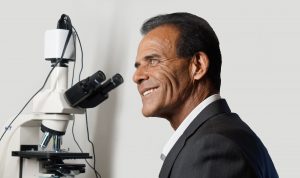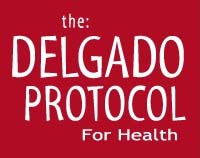 We live in a radioactive world and exposure is unavoidable. Radiation is undetectable by the human senses, you can’t see it, feel it, or smell it, but it’s always there silently chipping away at your health. You need to protect yourself from the radiation you’re exposed to in your daily life, and ready yourself for the potential fallout of a nuclear leak or bomb.
We live in a radioactive world and exposure is unavoidable. Radiation is undetectable by the human senses, you can’t see it, feel it, or smell it, but it’s always there silently chipping away at your health. You need to protect yourself from the radiation you’re exposed to in your daily life, and ready yourself for the potential fallout of a nuclear leak or bomb.
Radiation Basics
Radiation is the movement of energy in the form of rays, waves or particles. Ionizing radiation is radiation that has enough energy to remove tightly bound electrons from atoms or molecules, causing them to become charged, or ionized. Ionizing radiation can impair the normal functioning of cells and lead to cellular death.[i] Non-ionizing radiation does not have enough energy to remove the bonds between atoms and electrons and doesn’t appear to damage DNA, however, chronic exposure is still associated with numerous negative health effects.
Health Effects
Ionizing radiation affects the cells in the body that actively divide, it damages DNA, and large doses or long-term exposure can cause cells to mutate and become cancerous.[ii] Children and teens are especially susceptible to the damaging effects of radiation and prenatal exposure to ionizing radiation can cause fetal brain damage.[iii][iv] Medium level or long-term exposure to radiation can cause nausea, vomiting, diarrhea, headaches, cataracts, skin redness, hair loss, and fever.[v][vi] Radiation may also increase the risk for infertility and birth defects. In addition to causing cancer, medium-to-high level exposure of ionizing radiation can cause rapidly accelerated aging, thyroid disease, and fatal damage to your tissues and internal organs.[vii]
Radiation Sources:
The Sun
Sunshine is arguably the most familiar form of radiation. Fortunately, the infra-red rays that the sun emits do not have enough energy to penetrate the body, but they do damage and age the skin, and can cause skin cancer.[viii][ix]
Earth, Air, and Water
 The earth is a source of radiation — radioactive materials are found naturally in soil and rock. The radon air contains is the primary source of radioactive materials that humans receive naturally. Water also contains small amounts of radioactive materials including carbon and potassium.[x] You don’t have to worry about these natural sources however, because the radiation emitted is not typically large enough to cause damage.
The earth is a source of radiation — radioactive materials are found naturally in soil and rock. The radon air contains is the primary source of radioactive materials that humans receive naturally. Water also contains small amounts of radioactive materials including carbon and potassium.[x] You don’t have to worry about these natural sources however, because the radiation emitted is not typically large enough to cause damage.
Radiation Technology
Medical screening technologies such as digital mammography, bone density testing, computed tomography, X-rays, CAT scans, PET scans, and nuclear imaging expose you to harmful radiation and can increase your risk for cancer.[xi] Most security scans at airports, and some offices, also expose you to ionizing radiation.[xii] Cell phones emit radiation as well, and although it is non-ionizing, it may still cause insomnia, and infertility (if kept in your pocket), and negatively affect brain activity and function.[xiii]
Power Plants and Nuclear Weapons
Power plants and dirty bombs are the two biggest radiation threats on earth. Approximately 20 of the electricity generated in the US, and 11 of the energy produced worldwide comes from nuclear power plants.[xiv][xv] Although the radioactive material is contained in the plants, an accident or natural disaster could lead to catastrophic leaks. And with over 500 nuclear reactors worldwide it’s only a matter of time before we experience another Fukushima or Chernobyl disaster. Nuclear bombs also pose a tremendous threat, especially with today’s current political economy. There are over 15,000 nuclear weapons already in existence in various countries. These weapons have the power to wipe-out entire cities, and their residue can cause damaging health effects that can linger for decades.[xvi][xvii]
How to Protect Yourself
While you can’t and shouldn’t avoid the sun completely, you can protect yourself from its damaging radiation by wearing sunscreen when you’re outside for an extended period of time. Forgo any unnecessary medical imaging screenings and use thermography in place of mammography (for more information on this life saving technology: http://www.nickdelgado.com/mammography-vs-thermography/). If you are a frequent flyer, request a pat down at the airport instead of the X-ray screening. To protect yourself from cell phone radiation, keep your phone on your body as little as possible, use the speaker function to talk, turn your phone off or put it in airplane mode when it’s not in use, and consider buying an EMF shielding device.
Nutritional therapy can help protect you from ionizing radiation exposure and the particles that continue to emanate after a nuclear fallout. You should keep an emergency kit at home that contains potassium iodide as well as strontium chloride and cesium chloride capsule or drops. You can also consume these elements regularly, as a preventative measure. When you use natural sources of iodine, strontium, and cesium, they fill-up your receptor sites which will help reduce the absorption of harmful radioactive elements in the event of a fallout.
Dosages
Many Americans are iodine deficient and would benefit greatly from an iodine supplement, such as RAD Iodine, which is highly absorbable, and naturally sourced. You need to be somewhat cautious with supplemental iodine though, because too much can cause hyperthyroidism. You can test your iodine levels by applying a few drops of iodine tincture on your forearm. The stain should remain for a full 24 hours — the quicker it absorbs and disappears, the more deficient you likely are. You can also take 500 mg of strontium (which will have the added benefit of strengthening your bones) and 500 mg of cesium (which helps stabilize your mood) once a week to help fill your receptor sites.[xviii]
[i] https://www.iaea.org/Publications/Factsheets/English/radlife
[ii] http://www.imagingpathways.health.wa.gov.au/index.php/consumer-info/general-information-about-diagnostic-imaging/radiation-risks-of-x-rays-and-scans
[iii] http://www.who.int/mediacentre/factsheets/fs371/en/
[iv] https://www.health.harvard.edu/cancer/radiation-risk-from-medical-imaging
[v] http://www.who.int/mediacentre/factsheets/fs371/en/
[vi] https://science.howstuffworks.com/nuclear-bomb8.htm
[vii] http://www.bbc.co.uk/newsround/23777615
[viii] https://www.cancer.org/cancer/cancer-causes/radiation-exposure/uv-radiation/uv-radiation-what-is-uv.html
[ix] https://www.iaea.org/Publications/Factsheets/English/radlife
[x] https://www.nrc.gov/about-nrc/radiation/around-us/sources/nat-bg-sources.html
[xi] https://www.cancer.gov/about-cancer/causes-prevention/risk/radiation/cell-phones-fact-sheet
[xii] https://www3.epa.gov/radtown/airport-security-scanning.html
[xiii] https://www.tnuda.org.il/en/health-consequences/background/non-ionizing-radiation-harmful-health
[xiv] https://www.nei.org/Knowledge-Center/Nuclear-Statistics/US-Nuclear-Power-Plants
[xv] https://www.nei.org/Knowledge-Center/Nuclear-Statistics/World-Statistics
[xvi] http://edition.cnn.com/2017/09/23/politics/nuclear-weapons-over-time-by-country/index.html
[xvii] https://science.howstuffworks.com/nuclear-bomb8.htm
[xviii] http://www.raysahelian.com/strontium.html





